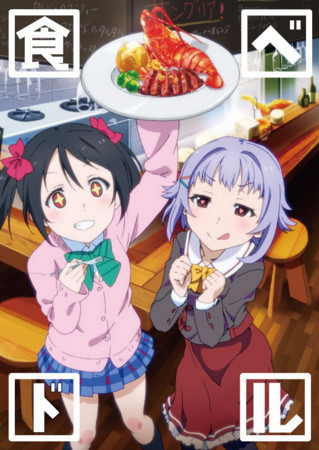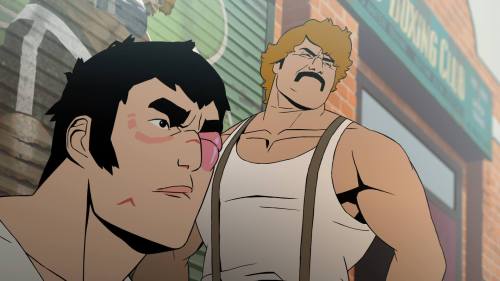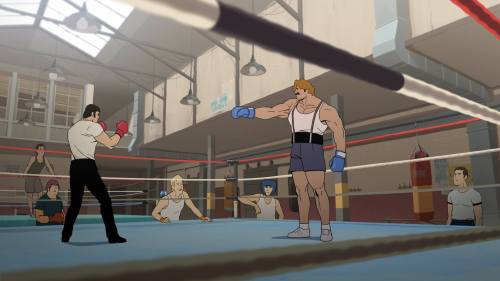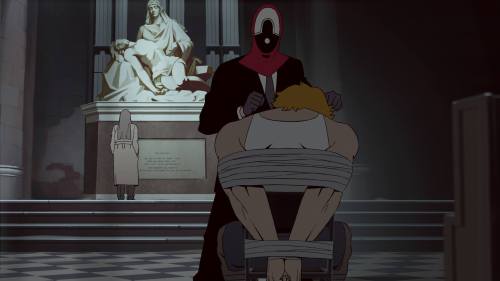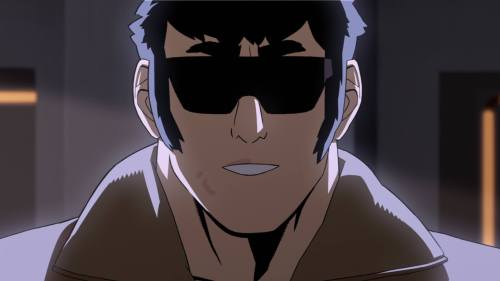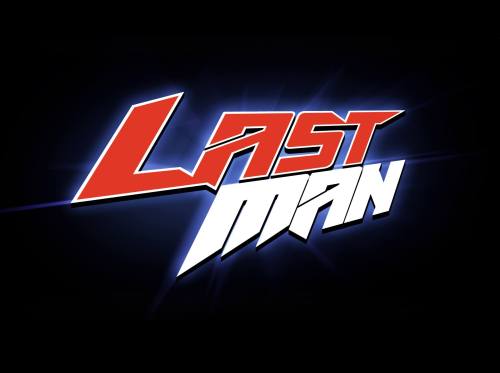Shared posts
実写版『咲-Saki-』の演じるキャスト達、普通にしてればみんな可愛いor美人の子ばかりだった
SD SThe main image they decide to go for to show off the Live action Saki cast is SENOO KAORI?!
If you don't know who that is, well, exactly my point.
(It's the beginner's luck girl)
"Love Live! Sunshine!!" Shiitake Inspires Set Of Pajamas
A little bit of Love Live! trivia: Chika's dog Shiitake in Sunshine!! and Otonokizaka Academy's alpacas in OG share a voice actress, namely Anna Mugiho. Now that the canine's work frightening Riko and cheering on concert performances for summer's run of anime is complete, Sunshine!!'s Best Girl has some time to inspire a get of cosplay pajamas.
Spotted from Movic, the February release goes for 6,000yen.
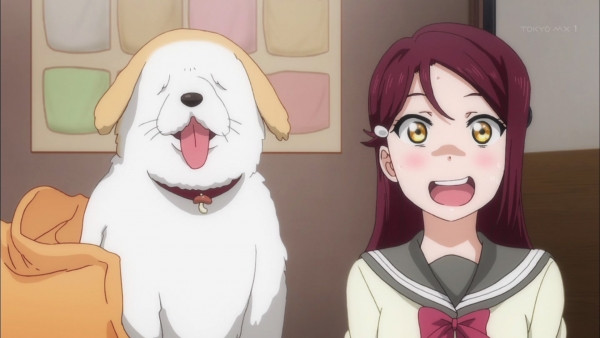
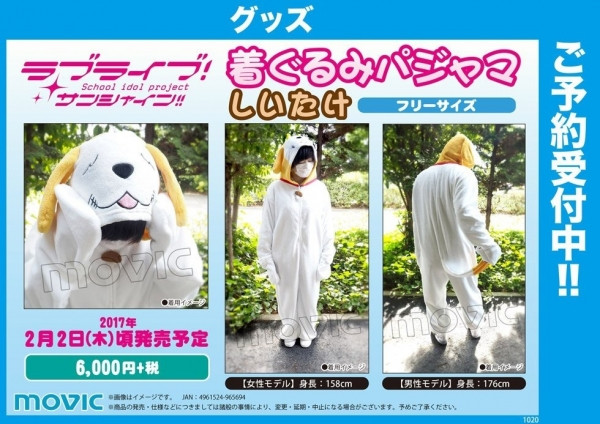
This month, Shiitake also inspired a card in the School Idol Festival game
JPSIF players: login today for a free Shiitake R card! #LLSIF #スクフェス #Aqours #lovelive_sunshine https://t.co/FdadeeAxRs pic.twitter.com/2yG3Q4CO8J
— ScʜooʟIdoʟTomodacʜɪ (@schoolidolu) October 8, 2016
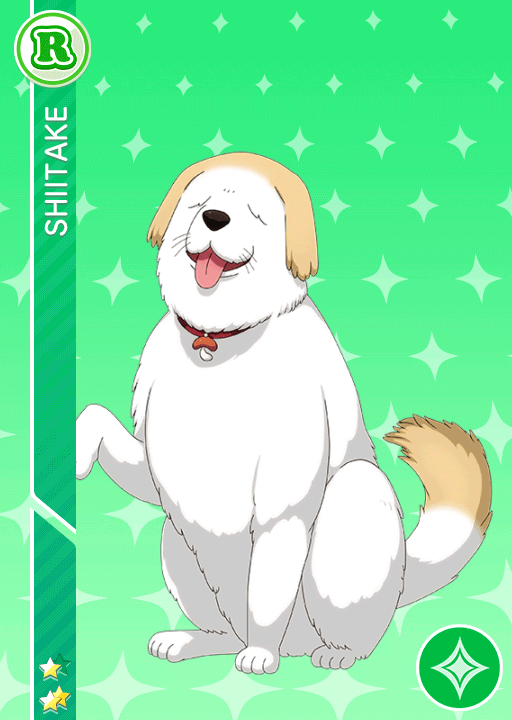
------
Scott Green is editor and reporter for anime and manga at geek entertainment site Ain't It Cool News. Follow him on Twitter at @aicnanime.
[告知][アイドル]アイドルクロスオーバー、みんなでごはんを食べに行くよ!『食べドル』
SD SFrom August, but an Idols and Food-themed doujinshi
C90新刊告知です!
夏ですね。
夏といえばアイドルですね!
夏といえばおいしいごはんですね!
というわけで、「二次元アイドル総合」本です。
夏コミC90新刊『食べドル』です!
頒布スペースは
日曜 東ケ-60a「幽郭の厨房」
日曜 東W-17b「indigo Note」
です。
書店委託はメロンブックスで行っています。
●アイドルクロスオーバー??
この本は、ジャンル「二次元アイドル」です。
つまり、様々な二次元アイドルが、垣根を超えて共演します。
主な所だと
・アイドルマスターシリーズ
・ラブライブ!シリーズ
・Tokyo 7th シスターズ
・アイカツ!
・プリパラ
・Wake Up,Girls!
などなど。あんなアイドルこんなアイドル、ずらーっと登場します。
彼女たちが挑むのは、食レポ。
関東を中心にした様々な、現実にあるお店で、美味しいものを食べ歩きます。
アイドルが美味しいもの食べてるのって、いいよね!
司会進行は、矢澤にこ&輿水幸子です。
(イラスト:九鳥ぱんや)
凛ちゃんと貴音、彼女たちが食べようとしているのは一体……?
(イラスト:もりやゆら)
ご存知(か?)、あのアイドルこのアイドル、あんなアイドルまで参戦!
(イラスト:こるり)
モアが、奈々子が、那珂ちゃんが、アレを食べる!
●食レポだけじゃないよ! アイドルアラカルト
マンガや豆知識など、食に関するあれやこれやを、アイドルたちがどどんと紹介しますよ。
(イラスト:咲良ゆき)
星梨花と、優雅な紅茶の一時を過ごそう。
(マンガ:でんたる)
ポテトの申し子北条加蓮と高坂穂乃果のイモづくし。
(マンガ:中音ナタ)
ゥンまぁーい! 説明不要!
●会場特典、かよちん箸置き
コミケ会場のみの特典として、白飯大好きかよちん箸置きがつきます。
(イラスト:悠飛あるふぁ)
ごはんといえば、この子でしょう!
箸を置こう!
かよちんと一緒に、ごはんを食べよう!
会場限定です。メロンブックスの委託分にはつきませんのでご注意ください。
また、会場では本と箸置きの分け売はしていません。セットですのでご了承ください。
名前:『食べドル』
二次元アイドル総合、ごはん食べあるき本
発行サークル:幽郭の厨房
頒布日:8月14日(日) コミケ90 三日目
スペース
日曜 東ケ-60a「幽郭の厨房」
日曜 東W-17b「indigo Note」
ページ数:50P
値段:会場頒布価格・箸置き付きセット 1000円
(本単品の頒布はしていません)
〜言い出しっぺ・企画・制作・編集〜
参加者一覧
書店委託について
「生ビールっすか!? レボリューション」もよろしくお願いします!
こちらは『たまご酔拳』3日め 日曜日東地区"V"01-bです。
(『食べドル』は置いていません)
Fight da!! Pyuta

Fight da!! Pyuta is an obscure black and white show from 1968. It was produced not by one of the major studios of the era but by a short-lived studio going by the generic name Hoso Doga Seisaku (Broadcast Animation Production). You'd be forgiven for assuming it to be one of the many throwaway shows produced at this time. But in fact it happens to be one of the best, featuring some of the most edgy comedy and vivid animation of any TV show of the era.
From psychedeila to pop art, political satire to parody, Pyuta incorporates themes and techniques that made it ahead of its time in its day, probably contributing to its short two-season run. It's a shame that the show was produced in black and white or its appeal would be more immediately obvious, but it's a tribute to the artistry of the animators that it nonetheless remains tremendously entertaining and watchable after nearly 50 years.
All you have to do is look at the opening theme to see just how out of this world this show is, with its profusion of subliminal inserts, pop sensibility, alternately rich and cartoony animation, and most of all the incredibly fast cutting. That is quite possibly some of the fastest cutting I've ever seen in an anime. This opening was a clear statement of intent from the staff that they were out to break the rules and do something special. Although not all of the episodes in the show itself live up to this promise, the remarkable thing is that even the less impressive parts are a cut above, and the best episodes are among the best TV episodes of the era.
Pyuta picks up where Mushi Pro's gag comedy masterpiece Goku no Daiboken (1967) left off, and in some ways goes even further. Like Goku, Pyuta was clearly the product of industry animators fed up with being bottled up by the constraints of the industry coming together to put their foot down and make some crazy animation the way they wanted for once. Pyuta ditches running story altogether and uses only the most rudimentary setup as a coathanger to allow its animators the most possible freedom in storytelling.
The world of Fight da!! Pyuta
One of the major factors behind the show's freedom is that, despite the claim of being based on the manga by Tsunezo Murotani, the show is in fact almost completely original. The previous anime produced by the studio was based on a manga by Tsunezo Murotani. This time they basically took the idea of Dr. Tsururi from the Dr. Tsururi manga by Murotani, but completely changed his design and personality and added Pyuta as the actual protagonist, along with inventing all of the other characters. It's essentially an original show, not actually based on a manga. This certainly helped give the animators more freedom to do their thing.
In coming up with the setup, the 1965 slapstick comedy movie The Great Race was an inspiration to the staff in terms of tone and gadgetry. Thus you get the amusing contraptions flown by Warusa & gang in the opening theme. This sets the basic tone for the show - slapstick and silly struggle between the protagonist and the bad guys piloting crazy contraptions, with the bad guys being kind of ridiculous and laughable.
The show's hero is Konno Pyuta (inspired by the recently introduced word computer), who lives with his grandfather, the bald genius inventor Doctor Tsururi (tsururi is the onomatopoeia for smooth). The Doctor actually just sits around sleeping all day, but when he gets hit on the head with a hard object, he goes into hustle mode. Signaled by the Kentucky Derby fanfare, his true genius comes out, and he assembles a brilliant invention. It's a staple of the show that there's at least one hustle scene per episode.
The show's heroine is Kakko-chan, who appears in a different guise in every episode - astronaut, painter, reporter, etc. Kakko-chan is in fact a completely different character in each episode, making Pyuta's acquaintance anew each time, which is a novel approach.
Pyuta rides around in his barrel helicopter taking orders for repairs and inventions. Meanwhile, the evil Warusa the 7th sends his sidekick Braky to spy on them and steal their inventions at the behest of a computer inhabited by the ghost of his ancestors. At the end of each episode, after his schemes are foiled, Warusa is punished by his ancestors. Voice actor Kyoji Kobayashi does much to bring Warusa's comically snobbish personality to life.
Thus, the show establishes a set of formulae, but the characteristic thing about Pyuta is that the staff used these formulae not as corner-cutting techniques but as challenges. Notably, the hustle would normally have been a "bank", but in a kind of protest against the notion of this kind of animated laziness, each and every instance of a hustle by Dr. Tsururi is animated anew - and with considerable verve - in every episode. Part of the show's fun thus becomes seeing how Dr. Tsururi will appear in his hustle scene, as the animators come up with increasingly outlandish hustle scenes.
The show starts off a little slow, as the animators were still getting used to the material early on. Episode 1 is hesitant and lacking in spark, and functions mainly to present the basics of the setup to the audience. But fairly quickly the animators loosen up, and midway through we start getting some truly memorable episodes as animated playfulness begins to trump rote storytelling. I've picked out a sampling of the best episodes below.
Episode highlights

| Episode 10: 南太平洋メチャクチャ大戦争 Crazy War in the South Pacific | |
| Director: | 倉橋こうじ Koji Kurahashi |
| Animators: | 林静一 Seiichi Hayashi |
| 鈴木欽一郎 Kinichiro Suzuki | |
Warusa wins a free trip overseas, which impresses Kakko-chan, who dreams of visiting the west. The jealous Pyuta builds a submarine to take her overseas, but instead of hitting up glamorous Paris, they wind up getting stranded on an island in the South Pacific. After they land, Pyuta accidentally steps off a cliff while showing off to Kakko-chan and falls into the water, barely escaping alive from the shark-infested waters. The natives see this feat and promptly crown him king. Meanwhile, Warusa accidentally falls off the plane after mistaking the exit door for the bathroom, and is rescued from the middle of the ocean by the Seventh Fleet. A spy has infiltrated the fleet, and Warusa helpfully points out that his nemesis Pyuta is the spy they're looking for. So begins a pitched battle between Seventh Fleet and the natives, armed with rocks and bows and arrows. The natives seem doomed, but a strange thing happens...
This is hands down the best episode in the series, and luckily it's available for viewing online, albeit without subtitles (watch). Even without understanding the episode, the remarkable amount of work that went into the animation, and the craziness of it all, comes through clearly. From the lively acting in the opening sequence to the insane hustle scene where Dr. Tsururi rips off his nose and eyes, to the remarkable battle sequence at the climax, the episode is filled head to toe with clever ideas and fun animation. The crazy sequence where an army of comic book superheroes appear out of nowhere and descend on Warusa is a particular highlight, underscoring the liberties the staff were able to take with the animation in this show. An incredible amount of work also went into animating the water, which splashes about realistically in the ocean scenes.
This episode is the crowning example of how the staff of Pyuta took a stand and decided to put all their effort into the animation for once, schedule and studio be damned. The episode took twice as long to make as the other episodes, and they used twice as many animation drawings. And this was not sanctioned by the studio. They did it because they were determined to do it, and it created friction with the studio because they were taking so long. Seiichi Hayashi reportedly almost got into a fistfight with producer Ken Saito over the whole thing because of Hayashi's brazen attitude. When asked by Saito when on earth they were going to finish, Hayashi essentially responded, "Damned if I know."
The director of the episode is Koji Kurahashi, who later changed his name to Tatsuji Kurahashi. The animators were Seiichi Hayashi and Kinicihro Suzuki, who were both at Studio Knack at the time, recently formed by Sadao Tsukioka. Indicating how special this episode was, Hayashi and Suzuki commuted to Hoso Doga Seisaku for their work on this episode, but for the other episodes did the work from Knack, like a regular subcontractor. There were two other subcontractors involved - Art Fresh and Jaggard - but I'm not sure where the work would have been done by those other subcontractors. It probably varied on an individual basis.
Kurahashi actually animated a considerable amount of the episode, uncredited. There appears to have been a rule that only two people could be credited for the animation for some reason, as there are actually a lot of other uncredited animators in the episodes. Kurahashi also did uncredited animation in episode 13, as did Studio Knack founder Sadao Tsukioka on the Studio Knack-outsourced episode. Kinichiro Suzuki did uncredited work on episode 23. Daizo Takeuchi animated the hustle scene in episode 1 uncredited. Even Manabu Ohashi reportedly did uncredited work on an episode, although I'm not sure which.
Kurahashi animated the opening sequence of the episode, which is a good intro to his style. He likes to move characters fluidly, doing lots of poses and acting, and avoids breaking down the characters into parts. Kakko-chan has a more vivid personality in this episode thanks to his animation, doing all sorts of interesting mischevious poses and actions. The playful "Hai Kancho-sama!" is particularly memorable.
The contrast with the Art Fresh episodes of Pyuta is instructive on the difference between animators of the Toei Doga vs Mushi Pro lineage: The characters in the Art Fresh episodes are broken down into parts, with the bodies being static and the arms being the only thing moving, in order to save labor. Instead of movement, clever compositions and stylish drawings help maintain interest. In contrast, Kurahashi refuses to do this, as he felt that in order to be able to create truly interesting body posing you had to keep it all integral and draw the body with every frame, otherwise it leads to static acting. Aside from having done a great job directing this entertaining episode, Kurahashi's acting animation is very lively. He was a great discovery for me in this series. Unfortunately, after Pyuta Kurahashi seems to have moved away from commercial animation. It seems Pyuta was his ultimate expression in the commercial anime format, although he continued doing more indie work down to the present day.
Just as The Great Race inspired the series as a whole, the 1967 slapstick spy flick spoof Casino Royale inspired Kurahashi with this episode. You can see this clearly in the climactic battle, where there are so many different things going on at the same time in one giant ridiculous melee. The game of hot-potato with a live warhead has a nice classic cartoon sensibility, and the subplot of the spy trying to kill the Commander is amusingly subtle. The comically diminutive child Commander remains throughout oblivious to the spy trying to kill him. After he falls overboard, we get regaled with a whole hilariously irrelevant sequence of him running into the bathtub to warm himself up because the water was so cold.
The story has a healthy streak of surrealism and black humor. Pyuta knows the natives are doomed, and doesn't want to fight because he knows he'll die, but by some strange miracle, every rock they throw and arrow they sling winds up blowing up a battleship. It's a magnificently surreal and inexplicable denouement that betrays expectations in a way only possible in animation. Probably my single favorite shot in the entire show comes in this sequence - the bewildering trompe l'oueil shot where the Queen points to the ships on the horizon, telling Pyuta to destroy them all, and dunks the ships in the water by way of example.
Seiichi Hayashi, who debuted as a manga-ka the previous year just a few years later in 1970 published his classic manga Elegy in Red, shows some early signs of his stylistic flexibility and pop-art-infused leanings with that remarkable sequence of the horde of superheroes descending on Warusa. Hayashi animated most of the part where Warusa is washed up on shore, and he also has a very interesting style of movement. Kinichiro Suzuki animated the memorable hustle sequence. The work of all three is intermingled throughout the episode, so there's no clear part breakdown. Both did work on only two more episodes, episode 13 and 22. Episode 13 is directed by Norio Hikone and the story is characteristically somewhat bland if workmanlike (the same can be said of his other episodes, 2, 6 and 25), but the episode is packed with movement thanks to their animation, assisted by Tsukioka. Episode 22 has more fun and characteristic drawings, again being an episode situated on an island in the South Pacific. Unfortunately episode 10 is the only episode directed by Koji Kurahashi, although he contributed animation to a few other episodes.

| Episode 11: ねむれる宇宙のカッコちゃん Sleeping Kakko-chan in Space | |
| Director: | 小華和為雄 Tameo Kohanawa |
| Animators: | 林政行 Masayuki Hayashi |
| 斉藤博 Hiroshi Saito | |
Kakko-chan brings glory to the great scientifically advanced nation of Japan in this what-if cold war farce that poses the question: What if Japan was the first one to send an astronaut into orbit? Kakko-chan experiences difficulties in space and disappears, that's what. Japan sends out a plea to the nations of earth for help, and the POTUS responds with a vow to bring Kakko-chan back safely - "We'll spend anything it takes! Don't let Russia beat us!" In response to this provocation, Moscow vows in the name of the great Soviet republic not to let the US beat them. France in its turn vows to show the world its true scientific might. The UK, not to be left out, steps in and vows on the Queen's name to bring Kakko-chan back to safety. So begins a global struggle for dominance of the skies.
This episode is easily the funniest in the show, with almost every moment perfectly hitting its satirical beat. It's the most overtly political of the episodes as well, not just casting a satirical light on cold war geopolitical power games but also commenting on Japan's comparative technological backwardness.
Initially Pyuta builds a rocket to go save Kakko-chan, but as usual his inventions suck. The rocket has boosters pointing every which way. It takes his grampa's hustle to get a real rocket built. The hustle scene combines parody with political satire, depicting Dr. Tsururi as Tetsujin 28 blithely landing on and destroying the National Diet. While the nations of the earth parade the rocket ships they've built to rescue Kakko-chan in grand processions, Pyuta & co strut down the street in a Chindonya costume while harried housewives look on in bafflement from the sidelines and complain about the noise.
In an earlier scene, when everyone in Japan is celebrating Kakko-chan's new world record of having orbited the earth 150 times, we see a montage sequence of different groups celebrating. In one shot, the crooks have just escaped from a prison, but they're so elated by the news that they give their tied up jailer a cheer. The crooks all look the part - striped prison uniform, black mask, ball and chain... LDP candidate sash.
The best episode of Gokuu no Daiboken, episode 4 by Osamu Dezaki, was a geopolitical metaphor for the cold war in which various gangs fought over a treasure map. This episode is a lot more direct about the butt of its joke.
This episode was directed by Tameo Kohanawa and animated by Jaggard's Hiroshi Saito and Masayuki Hayashi. Jaggard actually has more of a Mushi Pro lineage than a Toei Doga one. Hiroshi Saito worked at Otogi Pro and then Mushi Pro before founding his studio, and Masayuki Hayashi had only worked at Mushi Pro. But Jaggard was primarily an advertising animation studio, which made it a fit with the ad-trained staff of Pyuta. This perhaps shows up in the episode's many caricature drawings, including some amusing big-nosed caricatures of an irate Lyndon B. Johnson and a sad Charles de Gaulle. The episode has the feeling of a moving political cartoon, a rarity in anime, in which any political commentary is usually very oblique.
Episode 21 about air conditioners is another good Jaggard episode, this time directed by none other than a young Toshio Hirata. The episode has some stylish drawings and pithy visual jokes that are clearly the product of animators steeped in the lingo of advertising presentation. Leo from Jungle Taitei even makes a cameo appearance - in a zoo. (Hirata had worked on the show a few years earlier.) It's ironic that three years after working on the first color anime Hirata again worked on a black and white show.
Tameo Kohanawa is exemplary of the show's directors who came from Toei Doga but distinctly did not share the studio's professed Disney-inspired traditional approach to animated filmmaking, preferring instead the more cartoonish and edgy alternatives like UPA and Warner Brothers. In his work you get a feeling of an animator having fun and not just merely rotely regurgitating a manga. Kohanawa had actually spent 5 years working at an ad agency prior to joining Toei Doga, underlining his stylistic leanings. He soon directed episodes of Tensai Bakabon and Akado Suzunosuke for Tokyo Movie before becoming involved with Group Tac and directing the Jean-Henri Fabre episode of Manga Ijin Monogatari and the Oni of Setsubun episode of Manga Nihon Mukashibanashi. And that's just the early years of this very prolific director who is still active today.
Masayuki Hayashi is actually the little brother of Shigeyuki Hayashi, better known as Rintaro. Art Fresh's Koji Sugii, meanwhile, is the little brother of Gisaburo Sugii. Both got their start as animators on their elder brothers' respective shows during the early years. The same can be said of Satoshi Dezaki, Osamu Dezaki's older brother.

| Episode 15: ワタ―シ天才きみ気ちがい Me genius, you idiot | |
| Director: | 竹内大三 Daizo Takeuchi |
| Animators: | 金沢孝義 Takayoshi Kanazawa |
| 尾根英夫 Hideo One | |
Warusa seeks to learn the secret of Dr. Tsururi's hustle, and invents a machine to transfer his brain into a helmet. This turns Dr. Tsururi into a brain-dead zombie. Warusa then uses Dr. Tsururi's hustle abilities to frame Pyuta for having turned Dr. Tsururi into a zombie, but Pyuta comes back for revenge...
This is perhaps the most outrageously fun episode in the series. It's the ultimate expression of the slapstick nonsense side of the show, with every moment packed with some kind of gag or creative visual idea - from the opening parody of North by Northwest, to the silent movie sequence set in early 20th century Japan, to the multiple hustle scenes featuring Warusa's capitalistic vampire ID going on a rampage sucking blood from women and selling it at the local blood bank for cash.
I talked about Daizo Takeuchi in my post on Tensai Bakabon, noting the freedom and craziness of his animation in that show. Well, already three years earlier he had some some even crazier work in Pyuta, as he had far more freedom with the material here. In contrast with someone like Norio Hikone, who makes proper drama with proper characterizations and proper animation, Daizo Takeuchi seems to refuse to take the work seriously. Animation to him seems to be nothing but something to do for fun - and that's what makes it so great.
The idea to insert the North by Northwest reference was Daizo Takeuchi's - it wasn't in the script. He similarly inserted a 2001: A Space Odyssey reference in episode 18. The characteristic of Takeuchi's episodes is that they build and build to wild, raucous climaxes, and you never know what's going to happen next. Takeuchi is also one of the freest animators in the show in terms of deforming the characters. Warusa goes through some impressively insane deformation clearly inspired by cartoons, not only squashing and stretching improbably but exploding into little pieces and turning into abstract art.
Daizo Takeuchi directed two other episodes for the show, episode 18 about gangsters and 24 about a beauty contest. Both are packed with crazy drawings and bold deformation of a kind only Daizo Takeuchi could have come up with. Episode 24 seems to have been animated by Mushi Pro people and hence is more static in the movement, but the climax features some of the most insane drawings in the whole show as the masks turn into bizarre abstract faces on the contestants. The bizarre Warusa face at the top of the post is from episode 24.
Daizo Takeuchi drew key animation on the studio's previous show Pikkari B and made his directing debut under that show's director, Hiroyoshi Mitsunobu, who is the unofficial director of Pyuta. Incidentally, Daizo Takeuchi drew the last part of the opening theme - the bizarre part where multiple Pyuta and Warusa heads appear on the screen and Warusa motions to the screen "OK? We done yet?". He inserts a similar meta gag in episode 15 with Warusa telling viewers to tune in next week for Fight da!! Warusa and later pointing at the screen and saying how "They understand my plan." The previous section in the opening theme with the alligator and the lion was drawn by Koji Kurahashi and is in a vivid full style contrasting with Daizo Takeuchi's more staccato and playful animation. The opening was storyboarded by series director Hiroyoshi Mitsunobu.

| Episode 23: よみがえるノ―タリン部隊 The Return of the Dumbass Squad | |
| Director: | 永沢詢 Makoto Nagasawa |
| Animators: | 金沢孝義 Takayoshi Kanazawa |
| 倉橋孝治 Koji Kurahashi | |
Near the end of W.W. II, a unit in the Japanese army attacks a secluded farming village in China and massacres all the inhabitants, carrying away the bodies for some unknown purpose. It turns out that the army is attempting to use human brains to create an army of cyborg soldiers. The army invites a young Dr. Tsururi and Warusa to carry out the research, but Dr. Tsururi refuses, saying the plan is against human rights, and is thrown in prison. Meanwhile, Warusa brings the research to fruition and succeeds in creating a cyborg soldier that will do whatever it is commanded. Unfortunately, the war ends before it can be put to much use, and the research facility is destroyed to hide the evidence of war crimes. Fast-forward to the present day, and the leader of the project comes out of hiding to attempt to revive the plan so that he can sell the cyborgs to a certain other rich country that needs soldiers for its own war in Southeast Asia...
This episode is based on the real-life story of Unit 731, which carried out horrific human experiments in China during the war. The Japanese public had just learned of the truth in a recent newspaper expose, which led to this episode on the subject. This is the most powerful episode in the series by a long shot, and it packs an impressive wallop. It's the best example of how Pyuta was used by the staff as a vehicle for social commentary and not merely for childish gags.
Right from the start this episode stands out, as it plunges you headlong into a scene of innocent civilians being mercilessly slaughtered by Japanese troops. It's hard to believe you're watching the same show. The episode is notable for its firm stance in acknowledging Japanese atrocities during the war, and doing so at a fairly early stage in the industry at that.
Although the nature of the actions of the commander of the unit have been changed for the anime, the parallel to Shiro Ishii and his Unit 731 is obvious. The cyborgs he creates are clearly a symbol for Ishii's research. The most powerful and unforgettable image of the episode is the creepy image of the permanently smiling faces of the cyborg soldiers as they go about massacring people.
The anime goes beyond merely placing a spotlight on the acts of Unit 731; the ultimate irony is that, like the commander in this episode, the people who perpetrated the crimes not only got away, but were rewarded for their actions. Shiro Ishii himself escaped prosecution largely because the Americans wanted his research data. Others received cushy posts at universities. Similarly, the commander in this episode resurfaces to get Warusa to build his soldiers again because his cyborgs are needed by another country in its war endeavors. In the end, war is about profit, and profit trumps justice and human life. At this point we are regaled with more battle scenes showing innocent civilians being bombed from the sky and shot on the ground. The theater has shifted south, but it's more of the same.
The animation of the war scenes is surprisingly realistic and detailed, and is clearly the work of Koji Kurahashi. He put a lot of work into the animation in this episode. This is his best work on the show after his own episode 10.
This episode couldn't have been made by anyone but Makoto Nagasawa. He is the one who brought the social commentary aspect to Pyuta. Nagasawa had been heavily involved in organizing unions at Toei Doga during his time there, so he was very much in touch with the world and politics, and this world view is reflected in his work. Nagasawa once said, "Gag anime is about exposing reality." Gag anime shouldn't be a self-reflexive parade of pratfalls and meaningless routines meant to evoke hollow laughter. It's when gag anime sheds light on the real world through humor that it becomes truly meaningful.
Credit should also go to MBS producer Ryo Inokuchi, who acted as the liaison between the studio and the station. He actively supported Nagasawa in his use of gag anime to do more meaningful storytelling in this episode. It's hard to imagine any other station approving this kind of story. We don't see behind the curtain for most anime, so there's no telling what wasn't produced, despite the best intentions of the staff, due to the requirements of the station or sponsor. Goku no Daiboken provides a concrete example of this. The brilliant first season shows what they wanted to produce; the rest of the show illustrates what they were forced to produce at the behest of the station and sponsor. This just goes to show the importance of not only good anime staff but a cooperative sponsor and station.
Various other episodes commented on war either specifically or in general. Episode 19, a satire on the subject of the bomb, includes a rather brilliant scene that obliquely satirizes Japan's apathy about world events. Pyuta is casually watching a newscast about a country being bombed by a newly developed bomb as strong as the A-bomb. As he works on his toy model of a Zero fighter, he comments that Japan doesn't have anything to do with war. After Pyuta leaves, Dr. Tsururi changes the channel to some dancing girls.
 |
| Self-references by Art Fresh |
The staff
How did this show come about? Essentially, Pyuta was a product of the early tricklings of the Toei Doga diaspora. Most of the staff of Pyuta came from Toei Doga, although a few are from Mushi Pro. So although in spirit Pyuta is similar to Goku, in style its lineage is slightly different, with its best animators more interested in creating dynamic movement than catchy drawings. So whereas Goku was at all times stylish and clever, Pyuta is more rough around the edges stylistically but richer in movement and experimentation.
Several subcontractors were involved in Pyuta in addition to the main production studio Hoso Doga Seisaku:
| KNACK (fd 1965): | Seiichi Hayashi, Kinichiro Suzuki |
| JAGGARD (fd 1966): | Hiroshi Saito, Masayuki Hayashi, Toshio Hirata |
| ART FRESH (fd 1967): | Koji Sugii, Masanobu Kozo, Soji Yoshikawa, Kazuhiko Utagawa, Mitsuru Suzuki, Seiji Okuda |
There are thus several connections to Goku no Daiboken. In addition to the overlap of Art Fresh staff, Toshio Hirata, and Norio Hikone directed episodes of Goku, and Yoshitake Suzuki was one of the writers. Although the Mushi Pro-lineage staff did good work here, Pyuta is overall dominated more by the Toei Doga inflection of Koji Kurahashi and Daizo Takeuchi. I suspect that only the Art Fresh episodes were farmed out wholesale, as those episodes (5, 8, 9, 16, 20) have Art Fresh directors, whereas the episodes with Jaggard (3, 11, 17, 18, 21) or Knack (10, 13, 22) animators have Hoso Doga Seisaku directors.
Many animators skipped around at various small studios during the 1960s after leaving Mushi Pro or Toei Doga. It was bit of a nomad life in those days. Pyuta is a reflection of this, with its mix of Mushi Pro and Toei Doga figures. After quitting their alma maters, they briefly worked at a studio whenever there was work to be had. Even studio-tied animators took work from other studios as part-time work to make ends meet. When work dried up at one studio, as it did after Pyuta ended, they moved elsewhere. Hoso Doga Seisaku shut its doors after Pyuta, so this exact team didn't work together again.
That said, a few of these same figures went on to work on the classic Tokyo Movie gag shows of the early seventies, providing an element of continuity. Seiji Okuda, Soji Yoshikawa, Daizo Takeuchi and Hiroshi Saito went on to work on Tensai Bakabon (1971), while Takao Kodama, Tameo Kohanawa, Eisuke Kondo, Mitsunobu Hiroyoshi and Norio Hikone went on to work on Group Tac's Manga Nihon Mukashibanashi (1975-1995). Otherwise, people like Koji Kurahashi, Makoto Nagasawa and Seiichi Hayashi soon left the world of commercial animation for more personal modes of expression.
This also has to do with the fact that many of these people became independent animators afterwards; Pyuta didn't merely gather together ex-Toei Doga staff, it gathered together those with a more indie mindset, which is what helps account for the show's unique nature. And Makoto Nagasawa is the main person responsible for assembling this rebellious crowd of artistically-inclined, independent-minded animators.
Makoto Nagasawa, creative leader
It was in large part through the connections of Makoto Nagasawa that the show's talented staff came together.
The credits of Pyuta are confusingly ambiguous. Of the three people credited with the "Structure", Makoto Nagasawa can be said to be the show's guiding spirit, if not its director per se. Essentially, Ken Saito was the producer, Hiroyoshi Mitsunobu was the director, and Tameo Kohanawa was the character designer, although these were hardly hard and fast roles, and episode directors had a great deal of control over their episodes.
Nagasawa joined Toei Doga in 1957 and quit in 1965. After working his way up through the ranks as an inbetweener, he became a key animator on Little Prince and the 8-Headed Dragon (1963) and Gulliver's Space Vacation (1965), in which capacity he designed and animated some of the best sequences in these movies (namely the dance sequence in Little Prince, which in a first for a Toei Doga film was pre-scored, and the scene on the alien planet in Gulliver). Nagasawa also happened to be the director and animator of the short Motoro the Mole (1962), which is one of the most stylistically daring of Toei Doga's shorts, done in a limited UPA-inspired style at odds with everything else the studio did.
Nagasawa was something of a creative leader at the studio. He was the representative figure of the other side of Toei Doga that we don't hear as much about, the more artistically-inclined side, urging his comrades to open their eyes to the work of talented foreign animators, and even organizing group watches of screenings of foreign animation by the likes of Norman McLaren, Jiri Trnka and Paul Grimault. This influences comes through clearly in his Motoro the Mole short. Although Toei Doga is best remembered for its features, it also had an advertising section housing animators with more artistic proclivities. Partly through his exposure to this foreign animation, Nagasawa was in fact more interested in the artistic side of animation rather than being interested in animation as theatrical entertainment, and it's this that led him to quit Toei Doga in dissatisfaction in 1965 to pursue more personal means of artistic creation.
Before I can continue about Nagasawa's involvement, I have to detour a bit to the early years of TV anime.
 |
| Osomatsu-kun (1966) / Lightning Boy Pikkari B (1967) |
The origins of gag anime
The first three years of TV anime, 1963-1965, were dominated by sci-fi anime inspired by the space race and hero shows. After Fuji TV pioneered TV anime with Tetsuwan Atom, the station TBS had joined the fray immediately in 1963 with sci-fi hero actioner 8 Man produced by TCJ. For their next show, they wanted to build on this success by producing their own show, so in 1964 they hired Yutaka Fujioka to put together the animation studio Tokyo Movie and produce Osamu Tezuka's Big X. Perhaps noting the fact that the hero fad was becoming stale, for their next production they opted to adapt the wildly popular daily life comedy manga Obake no Q-taro by the Fujiko Fujio duo. This is when Yutaka Fujioka scouted Daikichiro Kusube after he quit Toei Doga, leading to A Pro producing Obake no Q-taro. The huge popularity of Obake no Q-taro led to a fad for comedic/gag anime for the next few years up until around when Kyojin no Hoshi ushered in the spokon boom in 1968. Pyuta thus comes at the very tail end of that boom, bringing it to a fitting conclusion in the ultimate expression of that era's gag sensibility. It was also one of the last black and white anime.
The Fujiko Fujio due were at a studio called Studio Zero at the time together with a few other manga artists, including Fujio Akatsuka, later of Tensai Bakabon fame. It was witnessing the popularity of Obake no Q-taro that Osaka broadcaster MBS sent a producer in September 1965, the month after Obake no Q-taro premiered in August, to Studio Zero to ask them for permission to air an animated version of their Osomatsu-kun by Fujio Akatsuka. They wanted in on the game too. Studio Zero this time wanted to be the ones doing the animation, so they moved to a new, bigger building and hired staff, but when MBS came back to continue discussions, they had already found a studio they wanted to use: Children's Corner.
Children's Corner was a studio that had just been founded in 1964, a year before Nagasawa quit Toei Doga. Rather than being a brand new studio per se, it was essentially the Omori branch of Toei Doga, which up until that point had been responsible for animator training, but from this point on was reformatted into an independent studio under the aegis of its branch manager, erstwhile Nichido studio head Sanae Yamamoto. The studio only wound up lasting a few years before disbanding in 1966, but it acted as a nexus bringing together many of the ex-Toei Doga figures over the next few years.
Luckily for Studio Zero, MBS were more than happy to allow Studio Zero to also participate in the production - perhaps by way of insurance, as Children's Corner had no track record as of yet. Thus it was that the show came to be produced 1/2 1/2 by Studio Zero and Children's Corner.
This leads back to Makoto Nagasawa.
Makoto Nagasawa's freelance studios
After quitting Toei Doga, Makoto Nagasawa rented an apartment in the Hyakunin-cho section of Shibuya in Tokyo as his temporary base of operations while he taught at the Joshibi Junior Art College. Other Toei Doga staff who quit in the ensuing months wound up joining him to do part-time work there, and the space organically developed into an ad-hoc studio called Hyakunin-cho Studio. When Children's Corner received the commission to produce Osomatsu-kun, Sanae Yamamoto called on Makoto Nagasawa to help direct the show. In the process, he wound up getting the animators working in his studio to help him produce the show, including animator Koji Kurahashi, director Hiroyoshi Mitsunobu and art director Takao Kodama, who would go on to join him as the main staff of Pyuta. As other people quit Toei, he called on them to help him produce Osomatsu-kun.
Thus, many of the people who went on to work on Pyuta began their association with the group through Makoto Nagasawa and Osomatsu-kun. In addition to early joiners Koji Kurahashi, Hiroyoshi Mitsunobu and Takao Kodama, Eisuke Kondo also left the Toei Doga CM section to join the Osomatsu-kun crew. Latter-day manga artist and illustrator Seiichi Hayashi began working on Wolf Boy Ken under Sadao Tsukioka and then, after working on pre-production for Horus, accompanied Tsukioka in 1965 when he quit to form his own studio, Knack. Kinichiro Suzuki may have followed him to Knack at the same time. It's from Knack that Seiichi Hayashi and Kinichiro Suzuki participated in Pyuta.
When Osomatsu-kun ended, many of the same staff continued to work on Lightning Boy Pikkari B. This time production was split between Children's Corner and MBS's in-house animation production studio, Hoso Doga Seisaku, which was newly reorganized to accommodate TV anime production. Hiroyoshi Mitsunobu took on the role of series director, and in the process he brought on some more talent that would go on to work on Pyuta, namely Daizo Takeuchi, who had similarly worked on Wolf Boy Ken and then Horus as a second under Yasuo Otsuka before quitting in 1967, and Tameo Kohanawa, who had originally joined Toei Doga in 1959 before quitting to work at an advertising company for a few years and re-joining Toei Doga in 1964. He quit around 1966 to work on Osomatsu-kun and then was brought back by Mitsunobu to work on Pikkari B in 1967 and Pyuta the next year. Hiroyoshi Misunobu himself had worked in the advertising section of Toei Doga before quitting. Thus, Hiroyoshi Mitsunobu was another element bringing in the more ad-centric talent into these productions that helps account for their more indie sensibility.
Makoto Nagasawa meanwhile was not involved in Pikkari B but had in the interim formed yet another studio for the purpose of working on the movie Sesshoseki. It was located in the Sakuradai neighborhood, whence the name Sakuradai Studio. Many of the same people joined him there to help, as well as new faces such as Norio Hikone, who would work on Pyuta. During this time, Nagasawa was invited by Gisaburo Sugii to participate in the "idea brain" meetings held at Sugii's studio Art Fresh to come up with ideas for Goku no Daiboken. It was here that he met writer Yoshitake Suzuki, which led to him being invited to be the script chief of Pyuta. This is also presumably what led to the invitation of Art Fresh to produce several episodes of Pyuta, which is the full extent of the involvement of Mushi Pro figures in the show.
Another ex-Toei Doga figure who participated was Toshio Hirata, who attests to having been influenced by Makoto Nagasawa during his time at Toei Doga. Hirata quit Toei Doga in 1966 and went to Hiroshi Saito's ad studio Jaggard. It's from here that he worked on Pyuta.
Post-Pyuta
It's unfortunate that Pyuta was canceled after two seasons, as by the end of the second season the staff were in full control of their approach to the show, and would certainly have produced more classic episodes if they'd been given the chance. But it's not surprising. Overly gag-centric shows tended more often than not to get canceled in the 1960s, which led to the ascendancy of the home dramedy format of the 1970s as a more acceptable compromise. Goku and Pyun Pyun Maru experienced a similar fate, although I suspect that this has more to do with the sponsors not wanting their products associated with unwholesome programming than with audience demands. After all, even the hugely popular Obake no Q-taro was still getting 30% ratings when it was cancelled because the sponsor felt demand for Q-taro toys had run their course.
After Pyuta, Makoto Nagasawa formed a joint studio with Norio Hikone from which he worked primarily on the long-running "Monoshiri" series produced by Studio Uni for Kirin. The show was a nightly 5-minute piece of animation highlighting an interesting subject. An example can be seen here. Several Pyuta staff migrated to this show alongside Makoto Nagasawa, including Koji Kurahashi, Eisuke Kondo and Hiroyoshi Mitsunobu. After a stint in New York in the early 80s, Makoto Nagasawa came to focus primarily on watercolor sketching. He was something of a pioneer of the sketchwalk, travelling around the world and documenting what he saw in watercolor sketches. He has published numerous books of his illustrations, most recently an introduction to sketchwalking.
Gag comedy anime died off somewhat after Pyuta until around 1971 when Tokyo Movie made Tensai Bakabon as a more straight-up gag show and Shin Obake no Q-taro as more of a home comedy. There were never any shows quite as unhinged as Goku or Pyuta made again, although certain directors did manage to experiment a little in certain episodes of shows like Gyators and Gamba, and Ganso Tensai Bakabon in 1975 set a new standard for nonsense gags. But even the best of these episodes never had the satirical sting of the best episodes of Goku and Pyuta.
ファイトだ!!ピュータ Fight!! Pyuta
26 eps, Hoso Doga Seisaku, 4/6/1968-9/28/1968, MBS Sat 7:30-8:00 PM
| Based on the manga by: | ムロタニ・ツネ象 | Tsunezo Murotani |
| Structure: | 斎藤賢 | Ken Saito |
| 光延博愛 | Hiroyoshi Mitsunobu | |
| 永沢詢 | Makoto Nagasawa | |
| Animation Director: | 小華和ためお | Tameo Kohanawa |
| Music: | 萩原哲晶 | Hiroaki Hagiwara |
| Art: | 児玉喬夫 | Takao Kodama |
| Script chief: | 鈴木良武 | Yoshitake Suzuki |
| Ep | Director | Animators | ||||
|---|---|---|---|---|---|---|
| 1 | 光延博愛 Hiroyoshi Mitsunobu |
|
||||
| 2 | 彦根のりお Norio Hikone |
|
||||
| 3 | 永沢まこと Makoto Nagasawa |
|
||||
| 4 | 近藤英輔 Eisuke Kondo |
|
||||
| 5 | 吉川惣司 Soji Yoshikawa |
|
||||
| 6 | 彦根のりお Norio Hikone |
|
||||
| 7 | 近藤英輔 Eisuke Kondo |
|
||||
| 8 | 宇田川一彦 Kazuhiko Utagawa |
|
||||
| 9 | 正延宏三 Kozo Masanobu |
|
||||
| 10 | 倉橋こうじ Koji Kurahashi |
|
||||
| 11 | 小華和為雄 Tameo Kohanawa |
|
||||
| 12 | 光延博愛 Hiroyoshi Mitsunobu |
|
||||
| 13 | 彦根のりお Norio Hikone |
|
||||
| 14 | 近藤英輔 Eisuke Kondo |
|
||||
| 15 | 竹内大三 Daizo Takeuchi |
|
||||
| 16 | 正延宏三 Kozo Masanobu |
|
||||
| 17 | 瀬山義文 Yoshifumi Seyama |
|
||||
| 18 | 竹内大三 Daizo Takeuchi |
|
||||
| 19 | 小華和為雄 Tameo Kohanawa |
|
||||
| 20 | [unknown] | [unknown] | ||||
| 21 | 平田敏夫 Toshio Hirata |
|
||||
| 22 | 光延博義 Hiroyoshi Mitsunobu |
|
||||
| 23 | 永沢詢 Makoto Nagasawa |
|
||||
| 24 | 竹内大三 Daizo Takeuchi |
|
||||
| 25 | 彦根のりお Norio Hikone |
|
||||
| 26 | 近藤英輔 Eisuke Kondo |
|
Original post blogged on b2evolution.
Lost in Transition: 'Jem and the Holograms,' Blaze and the Misfits, and Idols and Their Pedestals
Jem and the Holograms is about an all-woman glitter rock band and their quest to rise from the ranks of the Sufficiently Outrageous to become Truly Outrageous. The group has run into a problem: the lead singer, Jerrica, is terrified of singing in public. Thanks to Jerrica’s deceased father, though, they also have a solution: a holographic supercomputer that helps Jerrica create a stage persona that lets her get over her phobia.
There would be a lot of resonant storytelling with me if it just stopped there, since I know a thing or two about how a persona you can put on and take off can make things easier –- and harder. Like Jerrica, I also have a secret identity. However, sometimes solutions just free you up to tackle new problems, and the new problem that plagues Jem and the Holograms is their rival band, the Misfits, who claim that their songs are better and that they are going to get her.
In 1994, Vin Diesel Was Selling Street Sharks At Toy Fair

Look, Vin Diesel wasn’t born a star. From break-dancing to his own short films, the guy had to work real hard to get where he is today.
「ハイキュー!!」日向の卵かけご飯など、キャラの好物がクレープに
SD SHaikyu!! crepes. Hinata's is designed to look like rice with raw egg (???)
岩本ナオが“100年生きた猫”を描くショートマンガ、月刊ねこだのみに
SD SDId you know that there's now an entire monthly magazine dedicated to cat manga? It's called "Nekotanomi."
浦沢直樹の14万5千字インタビュー収めた書籍発売、展示イベントの生配信も
SD SA book of Urasawa Naoki interviews is going on sale
Evo 2016 goes big with lineup, finals venue
Main Visual for "Detective Conan" 2015 Film Featuring Kaito Kid Revealed
The teaser site for the upcoming 19th Detective Conan feature film "Gouka no Himawari" (The Hellfire Sunflowers) launched today with the first main visual featuring Kaito Kid, the protagonist of Conan creator Gosho Aoyama's another popular series Magic Kaito. The tagline says, "Can you solve this 'art'?"
The TV anime adaptation of Magic Kaito, titled Magic Kaito 1412 and produced by A-1 Pictures, has been aired in Japan since this October. According to the credit, the film is produced by TMS Entertainment who has produced all of the the Detective Conan anime series since 1996. The film centers on the mystery around a series of paintings of sunflowers by Vincent van Gogh.
Detective Conan: The Hellfire Sunflowers is scheduled to be released on April 18, 2015. The official site
for the film will be fully launched with more information this Saturday.
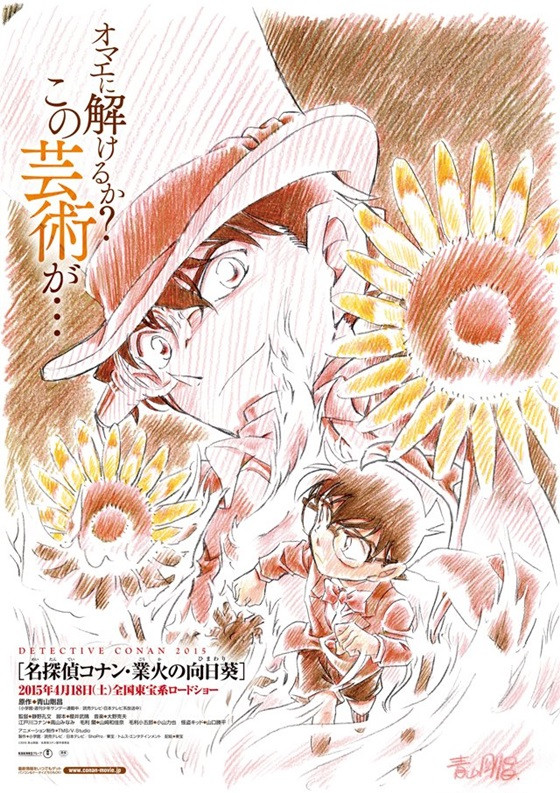
via: Comic Natalie
© 2015 Gosho Aoyama/Detective Conan Production Committee
セーラームーン新作Tシャツ、ドルマンスリーブ型も登場
SD SNew Sailor Moon t-shirts
Moodbuilder, Worldbuilder: Tite Kubo & Chapter Pages
I liked Tite Kubo’s Bleach a whole lot until I suddenly didn’t. Y’all know how that goes. You get into it, you give it a lot of rope to hang itself, then you get comfortable, then you let it coast a little bit, and then you realize you’ve just read 38 volumes of a comic and haven’t liked anything about these stupid Arrancars but every one of the last ten or so volumes have had exactly one REALLY GOOD chapter or scene near the end, just good enough to convince you to pick up the next volume and—enough. And then I ended up with a Weekly Shonen Jump subscription and now I get it for basically free. Life! I recommend it, though. If you like this kinda story, Bleach is the real deal for a good while.
Two things I never stopped enjoying about Bleach, though, are Kubo’s way of rendering fashionable clothes and the chapter pages. The fashion’s got obvious appeal, but it’s a bit harder to explain the appeal of the chapter pages. That sounds a little stupid to even type, mainly because the short version is “Kubo has a great sense of fashion, design, wonder, and that shows on his chapter pages, especially as the series goes on and he becomes more daring and creative with the layouts and art.” That makes sense, and I imagine you’d agree if you saw a few of them. Luckily, I happen own a lot of Bleach and I picked twelve of them that I like from the first few volumes of the series, plus the first three so you can see how soon Kubo started doing interesting things.

“Violate the Dead” is surely the result of some kind of confusion. Bleach isn’t really that type of series…
But you can see the appeal of these, I think, particularly if you’re into this kind of story. These early chapter pages are cool, but par for the course for series like this. There are cool costumes, interesting What Ifs, some good humor (I especially like numbers seven and twenty-six), and they’re honestly just very strong images. They work.
Part of the reason why they work is Kubo’s choice of titles. There’s some musical-sounding phrases like “Binda Blinda,” which is cool, and straightforward titles like “The Gate of the End,” which is also cool. Kubo does most of his chapter titles in English, and I’m always pleasantly surprised by both the poetry and quality of the titles. I love Eiichiro Oda’s One Piece and Takehiko Inoue’s Vagabond more than most comics, but they don’t have memorable chapter titles. Bleach does.
Once chapter nine hits, Kubo gets a lot more inventive, playful, and melancholy with the titles. The titles for 1-8 aren’t bad, but they aren’t full of potential like “Wasted but Wanted” or “6/17 op. 2 Doesn’t Smile Much Anymore” or “Paradise is Nowhere”/”Paradise is Now Here.” There’s a playfulness or sense of foreboding in some of these, and that carries through to the stories, too. A good title is legendary. “Valley Forge, Valley Forge.” “This Man… This Monster!” “Lonely Place of Dying.” “Tommy’s Heroes.” “First Shot, Last Call.” “Days of Future Past.” “How to Murder the Earth.” “A Game of You.” “Rake at the Gates of Hell.” “The Death Wish of Terrible Turpin.” “The Great Cow Race.” “Anything Done for the First Time Creates a Demon.” (I asked friends for some memorable names so this list wasn’t just my own, and now we are off at the races naming great titles, even the ones with so-so stories. Could do a post on those alone, easy. Comics!)
Here’s a few more chapter pages, but from volumes 34-38, and then later still in the series, from middle/late 2012 through middle 2013 Weekly Shonen Jump.


The first thing to notice is that the covers in a pin-up style have gotten better. Kubo’s a pretty talented artist, and it’s cool to see the leaps in quality that he made over the years. The characters feel rounder, his storytelling choices are more confident, and there’s a sense that Kubo wants to push the limit of the chapter page.
It’s not obvious here, because these chapter pages are stripped almost entirely of context, outside of a loose chronological progression (the negative numbers are flashback chapters). You don’t know where the pages fall in the chapter, what the story’s about, or anything like that. But what makes so many of these chapter pages so great is that Kubo treats them as a cold open rather than anything dedicated to purely saying “This is chapter three hundred and eight-six of Bleach, a comic series by Tite Kubo.”
The chapter pages hit at the end of scenes, on the last page of the chapter, two pages before the chapter, and pretty much anywhere, including occasionally the first page. Instead of using them like American comics use recap/credit pages, Kubo uses them as just another storytelling device. It’s like watching a tense scene in Breaking Bad and feeling yourself surprised by the fact that you unconsciously exhaled as soon as that music twanged up, or feeling that split-second of dead air before Justified‘s theme kicks in.


It’s a mood-building breather, and it’s something that is rare in my comics-reading experience. Story titles are often included in comics often as a matter of fact, something to sit atop the credits and define the arc. It’s cool when they’re worked into the art, but they never actually feel like part of the story. They’re just an accessory, if that metaphor makes sense. But when the chapter pages, and titles, are used like this, it really, really adds to the story.
I can see how people would think it’s wasteful, since comics only get a few pages. But Kubo is spending one or two pages telling several pages worth of mood. It helps. It’s an enhancement.

I read a lot of comic books. Part of what keeps me coming back to the comic book as a format, be it stapled or glued or digital-only, is seeing fresh things like this, things no other medium could really do properly. I like to be surprised and entertained, and even when Bleach is busy disappointing me, I know that Kubo’s got something up his sleeve that makes checking in on Bleach worth it, almost every single time. Weekly Shonen Jump makes that easy, of course, but even when I was binging and not particularly enjoying it, this held true.
You can get Bleach and Weekly Shonen Jump on your tablet or computer monitor of your choice. Five bucks a volume makes it easy to dive in, and honestly, the early stuff is really good, and there’s flashes of great moments throughout. But when the quality of the writing declines, the art stays strong and gets stronger. The chapter pages are just one manifestation of that.Similar Posts:
- Must-read Manga Linkblogging
- Black History Month ’10…
- What do you think about Wednesday Comics?
- This Week in Panels: Week 155
- This Week in Panels: Week 171

